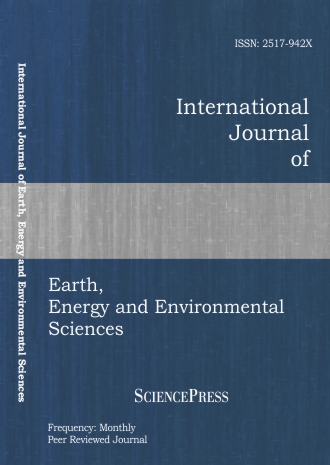
Scholarly
Volume:6, Issue: 12, 2012 Page No: 823 - 826
International Journal of Earth, Energy and Environmental Sciences
ISSN: 2517-942X
1427 Downloads
The Influence of Biofuels on the Permeability of Sand-Bentonite Liners
Liners are made to protect the groundwater table from the infiltration of leachate which normally carries different kinds of toxic materials from landfills. Although these liners are engineered to last for long period of time; unfortunately these liners fail; therefore, toxic materials pass to groundwater. This paper focuses on the changes of the hydraulic conductivity of a sand-bentonite liner due to the infiltration of biofuel and ethanol fuel. Series of laboratory tests were conducted in 20-cm-high PVC columns. Several compositions of sand-bentonite liners were tested: 95% sand: 5% bentonite; 90% sand: 10% bentonite; and 100% sand (passed mesh #40). The columns were subjected to extreme pressures of 40 kPa, and 100 kPa to evaluate the transport of alternative fuels (biofuel and ethanol fuel). For comparative studies, similar tests were carried out using water. Results showed that hydraulic conductivity increased due to the infiltration of alternative fuels through the liners. Accordingly, the increase in the hydraulic conductivity showed significant dependency on the type of liner mixture and the characteristics of the liquid. The hydraulic conductivity of a liner (subjected to biofuel infiltration) consisting of 5% bentonite: 95% sand under pressure of 40 kPa and 100 kPa had increased by one fold. In addition, the hydraulic conductivity of a liner consisting of 10% bentonite: 90% sand under pressure of 40 kPa and 100 kPa and infiltrated by biofuel had increased by three folds. On the other hand, the results obtained by water infiltration under 40 kPa showed lower hydraulic conductivities of 1.50×10-5 and 1.37×10-9 cm/s for 5% bentonite: 95% sand, and 10% bentonite: 90% sand, respectively. Similarly, under 100 kPa, the hydraulic conductivities were 2.30×10-5 and 1.90×10-9 cm/s for 5% bentonite: 95% sand, and 10% bentonite: 90% sand, respectively.
References:
[1] R. P. Chapuis (2002),"The 2000 R.M. Hardy Lecture: Full-scale